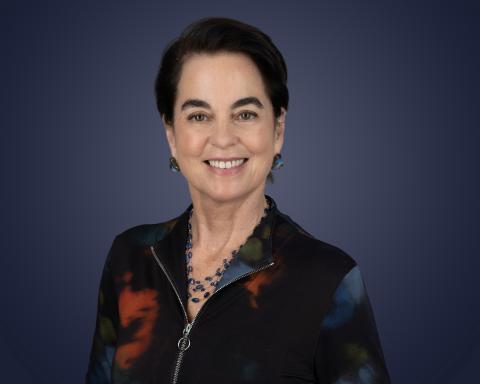“Paramount has devoted most of its scripted content budget to Taylor Sheridan after signing a multi-year deal with him in 2021 and his output has been astonishing,” says Tom Harrington, analyst at Enders Analysis. “His phenomenal speed – nine shows in three years – is at another level when it comes to creating franchises. There are others who have commanded similar control over the output of individual networks, like Law & Order’s Dick Wolf at NBC but he took years to expand his universe. The Sheridanverse feels like it has materialised in months.”
Homepage
Enders Analysis provides a subscription research service covering the media, entertainment, mobile and fixed telecommunications industries in Europe, with a special focus on new technologies and media.
Our research is independent and evidence-based, covering all sides of the market: consumers, leading companies, industry trends, forecasts and public policy & regulation. A complete list of our research can be found here.

Karen Egan, head of mobile at Enders Analysis, says a refusal to allow consolidation has made investment “very difficult”, particularly for smaller operators.
“It’s a real balancing act between consumer prices and investment and I certainly think that regulators and policymakers in Europe have got that balance wrong of late,” she adds.
“You can have low prices and investment, but not four networks,” says Egan. “You can have four networks that are cheap but not great. Or you can have four networks that are really good quality but not cheap.
“You really can’t have your cake and eat it.”
Tom Harrington was quoted in BBC News on "Gladiators 2024: Winners crowned after grand final"
2 April 2024"When you watch Gladiators, it's exactly the same as it was in the 1990s, in terms of the challenges, the music and the eliminations," Tom Harrington, an analyst at the media research firm Enders Analysis, told the BBC.
Mr Harrington said some other revived shows have failed because they've "been tinkered with" to the point they end up losing what made them good originally.
"With Gladiators, the producers understood what made it great to watch in the first place, and they've not messed with that at all," he added.
Mr Harrington said the Gladiators reboot had achieved a rare feat of getting families to come together on a Saturday night to watch TV.
"It's a declining phenomenon," he said. "Especially when you consider that younger viewers are moving away from TV to short-form video or streaming services.
"But here you have a show that's on at a particular time slot, and people [have tuned] in."
Tom Harrington was quoted in The Telegraph on ‘Clueless’ execs and few hits: How Channel 4 unravelled
2 April 2024“They are more exposed than anyone to the advertising market,” says Tom Harrington, head of TV at the media consultancy Enders Analysis, with commercials providing about two-thirds of Channel 4’s income. Much of the surplus it boasted of having less than two years ago has been spent – including £17 million on staff retention bonuses. “It was clear the market was going to get more difficult,” Harrington adds. “Ironically, now they are letting a lot of those people go.” Among the highly-regarded commissioners to have departed in recent weeks are head of factual Alf Lawrie, Caroline Hollick, the Leeds-based drama chief who brought I Am Ruth and It’s a Sin to the broadcaster, and head of youth and digital, Karl Warner.
Gareth Sutcliffe was quoted in The Guardian on "Disney faces showdown with critics amid calls for strategy shakeup
2 April 2024“The proxy battle has become an intensely personal issue for Iger, as well as his proxy supporters, specifically to stop Peltz at all costs from claiming a board seat,” said Gareth Sutcliffe of Enders Analysis.
“Disney in many respects is in a much better position than it was when Iger became CEO again,” said Sutcliffe, “but there are longterm risks, including what happens on linear TV networks and [streaming] costs. So there are still things that need to be done to put Disney on the right track.”
Spotify's music royalties: Rewarding 225,000 artists
2 April 2024IFPI reports trade revenues from streaming rose 10% in 2023 to reach $19.3 billion, and we estimate Spotify contributed about $7 billion. Spotify also rewarded music publishers with about $2 billion in royalties.
Spotify’s Loud & Clear data on royalties paid to the 225,000 professional and aspiring artists served to its 600 million users reveals a bulge in the middle part of the distribution in favour of Spanish language artists as the service expands in Latin America.
The top 1,000 earners are mainly artists at the top of the charts in the US and UK markets, which together contribute half of Spotify’s revenues and thus royalties. Top earner and top all-time streamed artist Taylor Swift earned over $100 million in 2023.
“The valuation at this stage is completely detached from business reality,” according to Niamh Burns, analyst at Enders Analysis. “But it’s not really about business—these investors are just betting on Donald Trump.”
Mobile service revenue growth was down 1.2ppts in Q4 as the impact of 2023’s price rises continued to wane.
Growth will wane further into Q1 and with spring price rises being 7-9ppts lower than last year’s, we don’t foresee a revenue boost in Q2.
With negative publicity and upticking churn from inflation-linked price increases, Ofcom’s review of the mechanism may prove to be a blessing in disguise.
